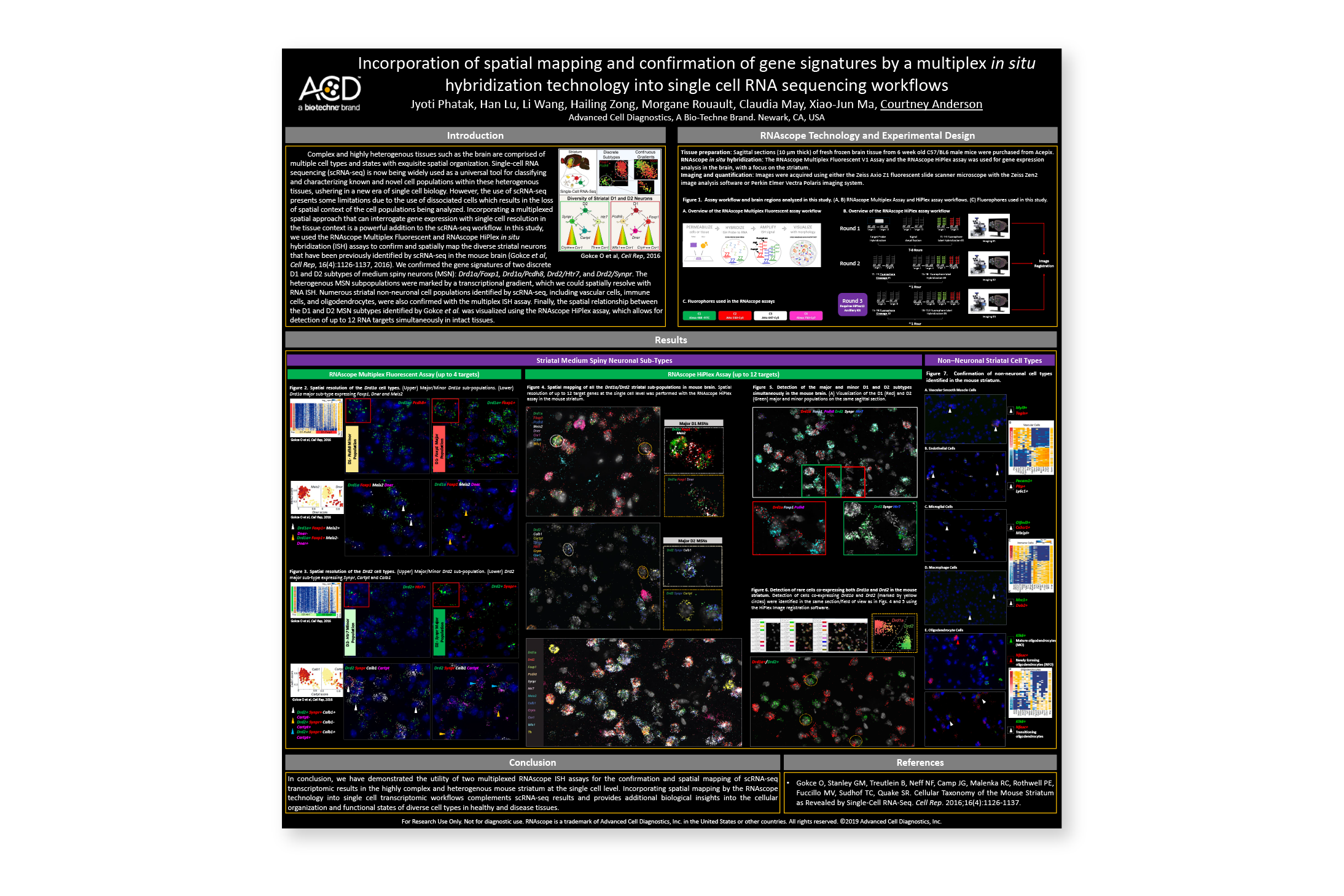Incorporation of spatial mapping and confirmation of gene signatures by a multiplex in situ hybridization technology into single cell RNA sequencing workflows - Presented at: 2019 CSHL Single Cell Analyses Meeting
Scientific Meeting PostersComplex and highly heterogenous tissues such as the brain are comprised of multiple cell types and states with exquisite spatial organization. Single-cell RNA sequencing (scRNA-seq) is now being widely used as a universal tool for classifying and characterizing known and novel cell populations within these heterogenous tissues, ushering in a new era of single cell biology. However, the use of scRNA-seq presents some limitations due to the use of dissociated cells which results in the loss of spatial context of the cell populations being analyzed. Incorporating a multiplexed spatial approach that can interrogate gene expression with single cell resolution in the tissue context is a powerful addition to the scRNA-seq workflow. In this study, we used the RNAscope Multiplex Fluorescent and RNAscope HiPlex in situ hybridization (ISH) assays to confirm and spatially map the diverse striatal neurons that have been previously identified by scRNA-seq in the mouse brain (Gokce et al, Cell Rep, 16(4):1126-1137, 2016).
In conclusion, we have demonstrated the utility of two multiplexed RNAscope ISH assays for the confirmation and spatial mapping of scRNA-seq transcriptomic results in the highly complex and heterogenous mouse striatum at the single cell level. Incorporating spatial mapping by the RNAscope technology into single cell transcriptomic workflows complements scRNA-seq results and provides additional biological insights into the cellular organization and functional states of diverse cell types in healthy and disease tissues.
